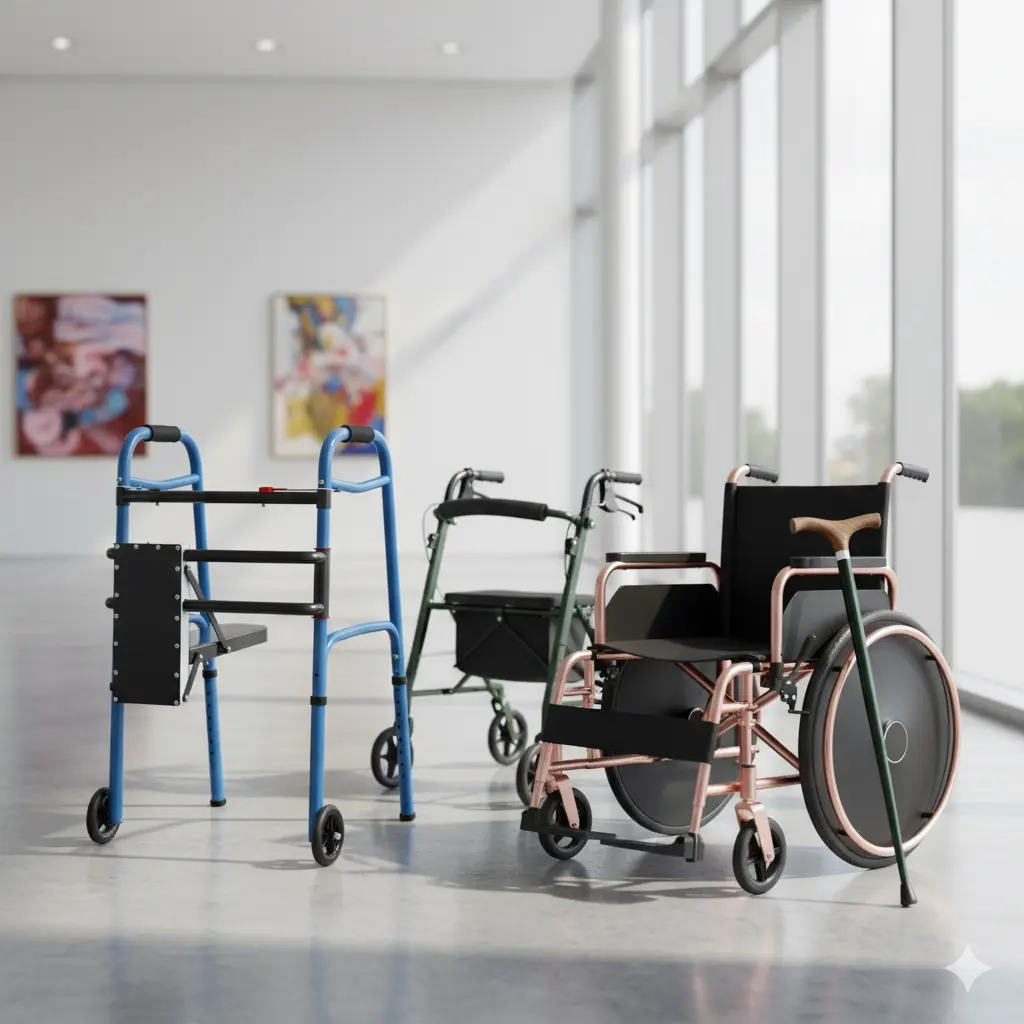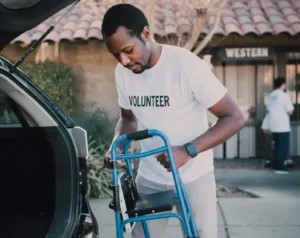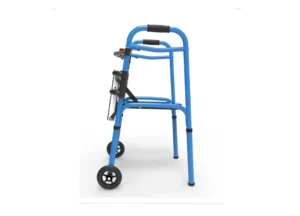Navigating life after an injury can be challenging, especially when it comes to reclaiming your independence. Mobility aids can play a vital role in this journey. In this blog, we’ll answer some of the most frequently asked questions about using mobility aids, helping you understand how they can support your recovery and enhance your quality of life.
1. What Are Mobility Aids?
Mobility aids refer to devices designed to assist individuals in moving around and maintaining independence. These can include walkers, canes, crutches, and wheelchairs, each serving a unique purpose based on individual needs.
Understanding the types of mobility aids available is essential. For instance, walkers are often suitable for those seeking stability, whereas canes can be ideal for individuals needing only minimal support. Crutches serve a different purpose, as they are commonly used for temporary injuries. Wheelchairs provide significant mobility for those unable to walk. No matter the device, the ultimate goal is to enhance mobility.
2. When Should I Start Using Mobility Aids?
It’s essential to start using mobility aids as soon as you need them for safety. Consult with your healthcare provider to determine when it’s appropriate to incorporate them into your rehabilitation process.
Often, people hesitate to use mobility aids due to concerns about appearance or perception. But remember, prioritizing safety and recovery is paramount. It’s understandable to have these feelings, however, using a mobility aid can mean the difference between living a full life and restricting your activities and interactions.
3. How Do I Choose the Right Mobility Aid for Me?
Selecting the right mobility aid depends on your specific condition, level of injury, and personal preferences. Always seek professional advice to ensure you select the device that best fits your needs.
Consider factors like your physical capabilities, where you plan to use the aid, and your lifestyle. For instance, a foldable wheelchair may be perfect for someone who travels often, while a more stable walker may be necessary for daily activities at home. Don’t rush this decision—having the right aid can significantly affect your independence and confidence.
4. Can Mobility Aids Cause Further Injury?
When used correctly, mobility aids are designed to prevent further injury. However, improper use or choosing the wrong type can lead to complications, so always follow guidance from your healthcare professional.
It’s also crucial to keep in mind that the way you use a mobility aid affects your overall safety. For instance, not maintaining your aid properly or using it incorrectly can lead to falls or other injuries. Regular check-ups with your provider can ensure you’re using your mobility aid effectively.
5. How Can Mobility Aids Improve My Daily Life?
Mobility aids can enhance your daily life by providing support, enabling movement, and fostering independence. They help make everyday activities more accessible, improving both your physical and emotional wellbeing.
Imagine being able to engage in social gatherings, go for walks in your neighborhood, or even participate in family activities without feeling limited. Mobility aids empower you to have a richer, more fulfilled life. They can bridge the gap between your current capabilities and your aspirations, paving the way for new experiences.
6. Are Mobility Aids Covered by Insurance?
Many insurance plans provide coverage for mobility aids, depending on your policy and the specific equipment you need. It’s essential to check with your provider to understand your options and any potential out-of-pocket costs.
In addition, some non-profits or community organizations may offer financial assistance for those who find themselves in need of mobility aids but are concerned about costs. Researching local resources can lead to support that you didn’t even know existed, making it easier for you to access the equipment you need.
7. Do I Need a Prescription for a Mobility Aid?
In many cases, a prescription from a healthcare provider is required to obtain certain mobility aids, especially for insurance coverage. Consult with your physician to determine the best course of action.
Even with a prescription, it’s essential to understand what type of aid is right for you, as doctors will often prescribe aids based on your specific needs and rehabilitation goals. Once you have a prescription, your healthcare provider can guide you through the selection and acquisition process.
8. How Do I Properly Maintain My Mobility Aid?
Regular maintenance of your mobility aid is crucial. This includes cleaning your device, checking for wear and tear, and ensuring that all components are functioning correctly. Follow manufacturer instructions for the best practices.
Additionally, consider scheduling regular check-ups with your healthcare provider to assess if your aid still meets your needs or if adjustments are required. Keeping your equipment in excellent condition not only prolongs its lifespan but also ensures your safety and comfort while using it.
9. Can Mobility Aids Be Customized?
Yes, many mobility aids can be customized based on individual preferences and needs. Speak with your supplier about options for adjusting height, features, and accessories to enhance comfort and efficiency.
Customization can also enhance the functionality of your mobility aid, making it uniquely suited to your lifestyle. For instance, adding accessories like cup holders or storage bags can make daily tasks easier and more enjoyable. Don’t hesitate to ask questions about what options are available—your comfort matters!
10. What Are Common Misconceptions About Mobility Aids?
There are several misconceptions regarding mobility aids, such as they are only for elderly individuals or that they signify weakness. In reality, they are valuable tools for anyone needing assistance, regardless of age or condition.
Moreover, many celebrities and public figures use mobility aids at various points in their lives, sparking important conversations about disability and acceptance. By dismantling these misconceptions, we can create a more inclusive understanding of mobility aids and encourage those who truly need support to embrace these tools.
11. Can I Use Mobility Aids While Traveling?
Absolutely! Many travel options accommodate mobility aids. It’s important to plan ahead, check accessibility, and ensure your device is suitable for your travel needs.
From airports to hotels, the travel industry is increasingly making efforts to be more accessible. Researching accessible transportation and accommodations can transform your travel experience, allowing you to enjoy outings without worrying about mobility limitations.
12. How Can I Build Confidence While Using Mobility Aids?
Building confidence takes time and practice. Start by using your mobility aid in familiar and comfortable environments. Gradually challenge yourself to venture into new settings as you gain confidence and experience.
You might also consider joining support groups where you can connect with others facing similar challenges. Sharing experiences and tips can boost your confidence and provide encouragement on your journey.
13. What Support Resources Are Available for Users of Mobility Aids?
Numerous support resources are available, including online communities, local support groups, and educational materials. These can provide valuable insights and encouragement as you navigate your journey with mobility aids.
Engaging with others who use mobility aids or who have gone through similar experiences can offer comfort and practical advice. Don’t hesitate to seek these out—they can be instrumental in your recovery and adjustment.
14. Are There Alternatives to Traditional Mobility Aids?
Yes, other alternatives exist, such as powered scooters or adaptive bicycles, which can offer more options depending on your lifestyle and needs. Explore various options to find what works best for you.
In fact, some innovative solutions emerge from companies and organizations dedicated to improving mobility aid technology. Staying informed about the latest options can open new doors to independence you may not have considered.
15. How Can Family and Friends Support Me in Using Mobility Aids?
Family and friends play a crucial role in supporting you during your recovery. Encourage open communication about your needs and allow them to assist you in adjusting to using mobility aids in your daily life.
Sometimes, simply having someone to walk alongside you can make a world of difference. Their encouragement can help you feel more confident and supported as you navigate this new chapter of your life. Make sure they understand how they can help best, whether that’s providing physical support or just being there to lend moral support.




